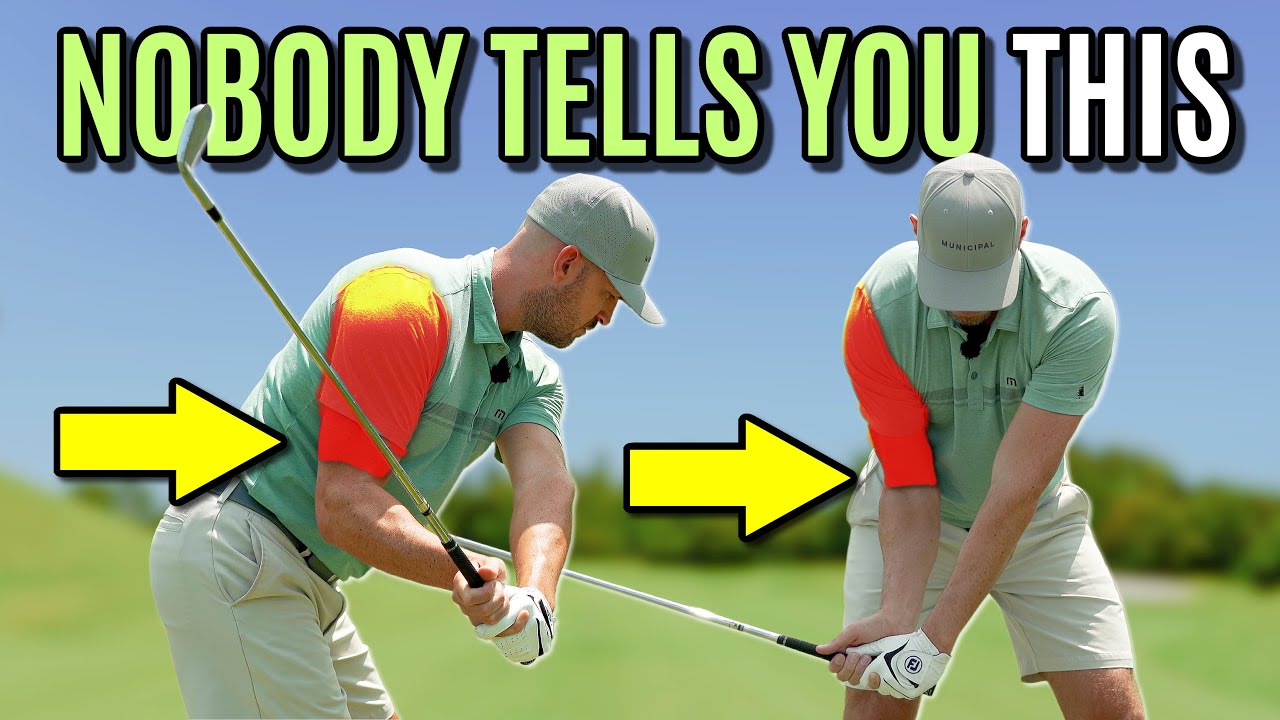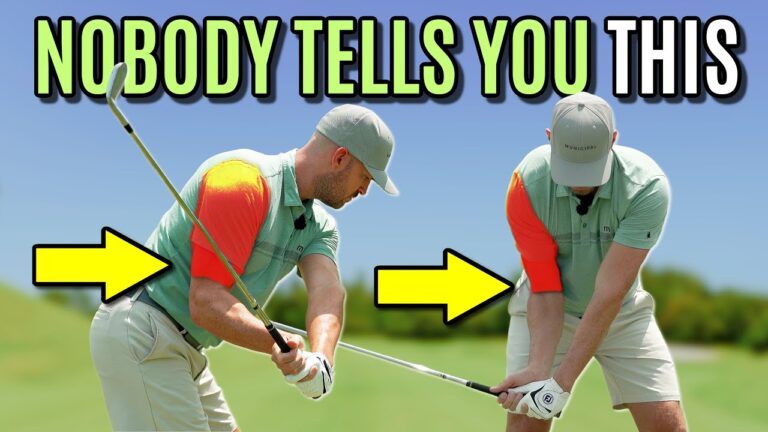
Want to improve your golf game fast? Focus on your right arm in the swing. Discover how to achieve better contact, consistent shaft lean, and a square club face by practicing this critical micro move.
Enhancing your right arm movement in the golf swing can be an incredibly effective way to achieve more control and power. This guide breaks down each step, providing you with simple exercises that yield quick, noticeable improvements.
Step 1: Understand the Core Concept of the Right Arm in the Golf Swing
The primary goal is to move your trail elbow forward towards the target from hip high to impact while keeping the elbow pit pointing away. Let this movement occur alongside independent forearm rotation, where the palm turns to face the target, creating the perfect shaft lean, without an early release.
Step 2: Feel External Rotation vs Internal Rotation
Poor contact and lack of distance often result from internal rotation, where the elbow pit rolls towards the target. To correct this, focus on external rotation: keep your elbow pit away, press your right bicep into your chest as you approach impact, and maintain the right wrist ahead of your fingers.
Step 3: Drill the Micro Move
Isolate your trail arm to practice the micro move. Hold the arm out, point the thumb up, and work the elbow forward while rotating the forearm independently. Practice slowly, repeating 20-30 times until comfortable.
Step 4: Add Timing and Body Motion
Between hip high and impact is when the magic happens. Integrate the elbow movement and forearm rotation with body motion for a complete drill. This combination will intensify your shot compression and accuracy.
Step 5: Use Simple Training Aids—The Plate Drill and Paddle Drill
Use a dinner plate or small paddle for visual feedback. Rotate the plate or paddle in your hand to match the elbow pit’s motion. This visual aid reinforces correct wrist and forearm movement.
Step 6: Transition to Hitting Balls
Once you’ve nailed the concepts, practice hitting balls, gradually increasing the swing extent to full strokes. This practice will enhance consistency in your game.
Step 7: Troubleshooting Common Misses
Errors happen. Adjust your actions based on ball flight feedback. If the ball tends to miss right, make necessary rotations to correct it.
Step 8: Build a Practice Routine
Dedicate 15-30 minutes daily for structured practice, blending drills with ball strikes. This repetition ingrains the proper movement pattern into muscle memory.
Step 9: Examples from Pros
Study players like Tommy Fleetwood. Watch their controlled arm movements for inspiration.
Step 10: Final Cues and Reminders
Keep the movements subtle and calculated. Effective practice yields a strong, consistent ball strike and improved swing results.
FAQs
How soon will I see improvement?
Most golfers notice a difference in their swing and ball striking after a single session. Sustained improvements typically follow a couple of weeks of targeted practice.
Can I use the plate or paddle drill on the range?
Absolutely. Employ these drills at the range. After developing the feel, integrate it into your regular play.
What if I start hitting the ball left?
Calibrate the forearm rotation. Incremental adjustments help maintain balance and timing.
Is this technique different with varying grips?
The core technique remains, but weaker grips may require more forearm rotation.
How to ensure the shoulder stays down?
Focus on keeping your shoulder low throughout the swing. Practice in front of a mirror or record for eventual feedback.
Do I need professional help?
If challenges persist despite self-guided practice, a professional coach or video analysis can offer valuable insights.


0 Comments